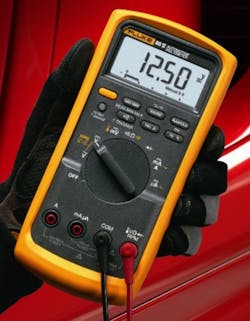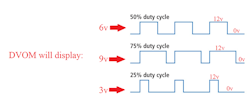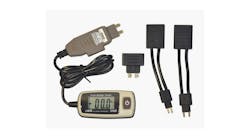You see it everywhere you look… humongous, towering toolboxes that someone of my tiny stature would require a stepladder to reach the upper-most drawers. I mean, let's face it, having the proper tools to service, diagnose and repair today's vehicles properly is not only a matter of efficiency but, is most likely a necessity. Specialized tooling is more in demand now than in years' past. We need them or we simply cannot complete the job. But that isn't my gripe. No, the issue I have is when I hear technicians tell others that the job simply can't be performed without "this exact” tool (whatever it may be, arbitrarily).
Naivety, in the not-so-distant past
Not too much more than ten years ago, I was a successful, factory-trained Honda master technician in the Philadelphia-area of Pennsylvania. I enjoyed my job each day although, many challenges drove me nuts (as I'm sure all of you can relate). Traveling the path of the OE-technician, regardless of which manufacturer's patch you wear on your chest, can many times be one you travel with "blinders" on. The training we acquire at the OE as well as the tools to be used to decipher different faults are meant to support the technicians (at the dealership), to solve issues most-efficiently (under warranty), at a very high rate of success (more than 70 percent). The point is, not every technician's mind functions the same nor is their understanding of the individual components (that make up the systems). The OE has to develop troubleshooting flow charts and implement tools that will help most technicians solve as many issues as possible, at the smallest financial expense possible. It isn't necessarily the OEs goal, to solve every problem/every time. That just isn't likely to happen.
Becoming dependent upon the service information (rather than learning how the vehicle “ticks”) is typically the result. Do problems get solved? They sure do, but the technicians don't necessarily grow from the diagnostic experience. Instead, they tend to reach for the service information each time, hindering their productivity, as well as their ability to learn and acquire the necessary skill set to be an efficient and accurate diagnostician. Learning how the systems, as well as the function of the individual components, at the most basic level, is what it takes to become a true master of the vehicles we tend to, daily. This was proven to me many times, as I started to venture away from factory-training and began acquiring knowledge from other sources.
I remember clearly, attending an aftermarket class conducted by none other than Jim Morton, of MATS (Morton’s Automotive Technical Services). The class was cleverly named "The A, B, C, and Ds of Ignition.” What struck me about this class was not the "meat and potatoes" of the class but, more so the approach. Jim confidently claimed he could find the fault in any ignition system on the planet, in under 15 minutes of diagnostic time. In my eyes, that is one heck of a claim to make. It simply didn’t make any sense to me at the time, and I was fascinated by this (Figure 1). The reason? Like so many others, I was reliant on the bible we refer to as "service Information." I'm referring to the diagnostic flow charts. The charts didn't educate me, they told me what to do. And, since I wasn't learning from them, I had to reference them each time I encountered an issue. It would be quite rare for me to solve almost any diagnostic issue in under 15 minutes. I needed to learn this "new" approach to diagnostics.
Discovering the contents of the crystal ball
The fascination grew, I became obsessed with the idea of this brilliant approach so, I encountered Jim with a request for private training. He smirked at me (in doubt that I'd "persevere") but told me to be at his home, later In the week. This is the moment my career (as well as my mindset) changed forever.
In Jim’s basement was a lab set up for learning. He had everything he needed to make the point come to life, that he boasted about in class, earlier in the week. You see, the basis for the aforementioned class was again, not about how to diagnosis a specific vehicle, but how to approach any vehicle. This all stemmed from a thorough understanding of the physics involved in each of the components' operation and theory behind how they all work together in a system. This was the making of the seemingly "crystal ball diagnostics" he spoke about just a few days prior.
For instance, the class regarded the ignition system diagnostic approach. He didn't once, mention a specific vehicle. He did, however, teach me that any ignition system requires a source of voltage. He then described the ability of a step-up transformer (ignition coil) to store potential energy, as it dwells. To do that required the current to flow through the primary windings of the ignition coil. There had to be a switching-device to provide a path to ground, to enable and disable current from through the primary-windings. As that switching device ceased current from flowing, all of the potential energy that built-up (within the primary coil windings) had to dissipate. It did that in the form of electricity. As long as there was a path for this kinetic energy to flow, we could then measure it with an ignition scope and analyze it, like a doctor views an X-ray.
Where was Jim going with this "A, B, C and Ds"? His point was " 'A' was needed to make 'B' and you certainly can't have 'D' without 'C'…which required 'B' " (Figure 2).
There was now a logical path to follow, for any vehicle ignition system I would ever encounter:
A= The system's source of the voltage supply
B= The switching device
C= Where the spark originates
D= Where the spark terminates
The very important lesson learned was to wrap my head around the physics. To understand that roughly 85 percent of the events that occur on the automobile, occur on all of them because you simply can't change the laws of physics. The 15 percent is how each manufacturer does it differently. Again, with the ignition system example. Jim's approach was to have a thorough understanding of the diagram drawn in Figure 3. But, that is just the 85 percent (how a spark is generated). How each manufacturer controls that series of events is what varies (for example:)
-Distributor with points and condenser and a pole-piece
-Optical pick-up
-2-wire COP
-3-wire COP
-4-wire COP
-Waste-Spark/Distributor-less ignition system
The approach is to master the 85 percent, but, know where to find the information pertinent to the 15 percent, when necessary.
The right tool is always the one you know how to use
As I mentioned in the beginning, I see many monstrosities of toolboxes everywhere I've been. Many of which have the drawers, cabinets, and lockers chocked-full of expensive tooling. I'd be willing to bet a fair amount of money that many of the tools (purchased with the intent of fixing cars efficiently) are either rarely used at all or, at least not to the full potential. What I consider to be a tool that is adequate for diagnostic capability, others may not agree and find the tool inferior. The point is, as long as you use the features of the tool(s) to the best of its capability, not only will get your money's worth but, you will become comfortable with the performance of the tools and develop an expectation of what that tool is going to display when components are functioning correctly and, when they are not functioning correctly. Understanding the limitation of any tool or testing technique you choose to implement, is crucial to accurate and efficient diagnostics. To develop this sense of trust is dependent on "you," the technician, and your dedication of your free time, to learn what to anticipate, as well as to push the tools to their limitations. If we don't know what our tools can/can't do, we won't know to trust the test results or not. This can’t be read in a book or learned in the classroom, it has to be experienced firsthand.
To demonstrate what I’m trying to describe, I will use a common DVOM that many of us are familiar with (Figure 3). The device boasts a max sample rate of .0250 seconds (250 microseconds). Meaning, it takes a picture (or a sample) forty times in a second. The functionality of the DVOM is that it averages those samples and will display the product of that rolling average, on the display for us to view. We can see by the picture in Figure 4, that the DVOM is displaying “12.5v.” That means the DVOM is seeing a difference in electrical potential (between the red and the black lead) of 12.5v on average.
Imagine now, that the DVOM is displaying “6v.” Considering the functionality of the DVOM, this could be interpreted in a couple of different scenarios:
-There is truly a 6v difference in electrical potential, between the red and the black leads, 100 percent of the time
-There is a 12v difference in electrical potential, between the red and the black leads, 50 percent of the time….and no difference between the leads, the other 50 percent of the time.
This is what I was referring to when I suggested finding the limitation of the tool. We can't tell if there is a steady voltage at the point of measure or if there is a signal switching from 0-12v/50 percent duty-cycle. For that, we would have to use a graphing multi-meter/lab scope that will visibly display the changes in voltage, over some time (Figure 4).
So, as can be seen to some, this song and dance we refer to as automotive diagnostics may appear to be an art form of sorts or, even magic. For those that are not yet "in the 'know," please don't be discouraged; get inspired:
-Take something away from what you’ve just read and discover what it is you do not yet know.
-Take the time to experiment with the tools you do own and understand what they can and cannot do.
- Use the service information for pertinent data (like specifications) and read them…not blindly as to simply follow directions. But, to understand what it is the Electronic Control Units (ECUs) are expecting to see when evaluating the operation of the systems they control.
-Reach for the wiring diagram before beginning an analysis so that you may anticipate what you should or should not see.
And last but, certainly not least, reach out to your fellow technicians for assistance (whether in the shop or across the world). Chances are great that there is someone out there that has experiences where you do not, and he/she is more than willing to lend a helping hand.





